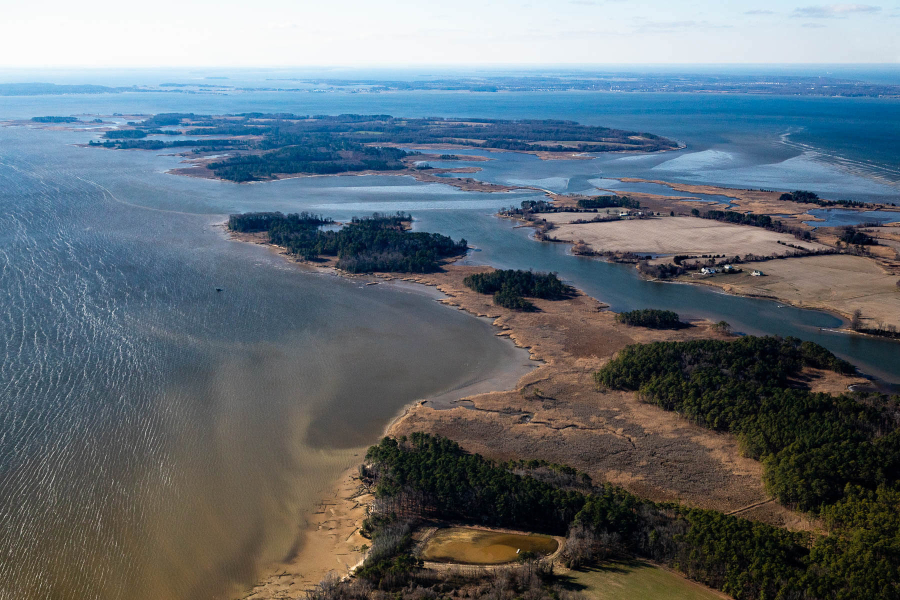Size of the Chesapeake Bay dead zone predicted to be about average despite heavy rainfall
Researchers release annual dead zone forecast

When rainstorms roll through the Chesapeake Bay watershed they bring the negative consequence of nutrient pollution washing off the land and into the water.
Mostly, nutrient runoff comes from fertilizers and manure on agricultural land, but are also in fertilizers used on your lawn or garden. Heavy rain can also overwhelm sewer systems and cause untreated sewage to discharge into rivers, which carries a lot of nutrients. More nutrients come from wastewater treatment plants and air pollution, though that’s not as affected by rain.
When there’s an excess of nutrients (in this case, nitrogen and phosphorus) in the water, they cause algae to grow rapidly and create algae blooms. These blooms die off just as quickly and in the process remove oxygen from the water. These areas of low oxygen are called dead zones, and are one of the main causes of fish and shellfish mortality in the Chesapeake Bay.
This summer, the size of the Chesapeake Bay’s dead zone is predicted to be about the same as the average measured between 1985 and 2023, according to a forecast from a team of researchers. An average dead zone is not exactly positive news. But what is good news is that even though the stream and river flows recorded from January to May in 2024 were 23% higher than the long-term average, the amount of nitrogen measured and used in the forecast was 131 million pounds, which is about the same as the average taken between 1985 and 2023.
So, despite relatively high rainfall, only an average amount of nitrogen made it into the Bay where it fed algae blooms. This could indicate that efforts to keep nutrient pollution from washing into the water is paying off. Some ways that Chesapeake Bay Program partners do this is by planting trees in communities and along rivers and streams, expanding green infrastructure in urban areas, installing pollution-reducing practices on farms, conserving forest and wetlands, and many other practices.
The Chesapeake Bay dead zone forecast also determined that hypoxic (low-oxygen) conditions formed in the Bay earlier this year than in previous years. Researchers attribute this to warmer weather and weaker winds, two conditions for increased hypoxia.
The amount of nutrients flowing into the Chesapeake from wastewater treatment plants (which is not affected by rainfall) is also included in the forecast. Researchers found that in 2024, 4.7 million pounds of nitrogen were recorded from this source between January and May, which is less than the 5.2 million pounds recorded in 2023 and the 5.7 million pounds recorded in 2022.
Want to help reduce dead zones forming in the Bay and your local rivers? Consider using less fertilizer, planting trees and shrubs and other actions that keep nutrient pollution out of the water.

Comments
There are no comments.
Thank you!
Your comment has been received. Before it can be published, the comment will be reviewed by our team to ensure it adheres with our rules of engagement.
Back to recent stories